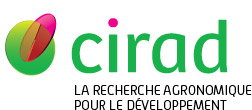Reategui-Betancourt Jorge Luis, Mazzei de Freitas Lucas Jose, Nascimento Rodrigo Geroni Mendes, Briceno Castillo Guido Vicente, Figueiredo Axa Emanuelle Simões, Rezende Alba Valéria, Alder Denis. 2025. Species grouping and diameter growth of trees in the Eastern Amazon: Influence of environmental factors after reduced-impact logging. Forest Ecology and Management, 578:122465, 11 p.
|
Version publiée
- Anglais
Sous licence  . .
613696.pdf Télécharger (4MB) | Prévisualisation |
Résumé : Tree growth predictions still present a challenge to forestry scientists. Species richness, ecological behavior variations, and different climate and soil interactions make it difficult to predict and understand tree growth in managed forests. This study examined the relationship between soil, climate, and forest management parameters and tree growth, using data from more than 30 years of monitoring in the Brazilian Amazon. We evaluated all trees with DBH ≥ 20 cm in a database of 66,182 observations in 166 permanent plots, corresponding to 17,440 individuals and 642 species. We used the CAFOGROM growth model approach to analyze the dataset, and found 10 statistically distinct species groups in terms of tree diameter growth and maximal DBH for the species. Species classification based on ecological characteristics plays a crucial role in mitigating the impacts of treatment decisions and selective logging in forest management, making it possible to adopt appropriate practices and define logging intensities and cutting cycles compatible with conserving forest structure and species population. The model revealed variations in species growth resulting from the influence of factors including light, nutrients, and competition. Depending on the group, soil properties such as percentage of sand, silt, total carbon, presence of aluminum and phosphorus, and exchangeable bases or cation exchange capacity can accelerate or limit tree growth. However, no direct relationship has been found between specific soil and climate variables and an ecological group or tree size. Our study highlights distinct growth patterns among different species groups in response to reduced-impact logging and environmental variables. Effective forest management requires a nuanced approach, considering the varied growth responses of different species groups to ensure sustainable use and conservation of forest resources.
Mots-clés Agrovoc : aménagement forestier, croissance, exploitation forestière, forêt tropicale, facteur du milieu, écologie forestière, écologie, accroissement forestier, écosystème forestier, adaptation aux changements climatiques, arbre forestier, forêt tropicale humide, ressource forestière
Mots-clés géographiques Agrovoc : Brésil, France
Mots-clés libres : Tree growth, Ecological groups, Soil, Climate, Forest management, CAFOGROM
Agences de financement hors UE : Embrapa Eastern Amazon
Auteurs et affiliations
- Reategui-Betancourt Jorge Luis, UNB [Universidade de Brasilia] (BRA) - auteur correspondant
- Mazzei de Freitas Lucas Jose, EMBRAPA (BRA) - auteur correspondant
- Nascimento Rodrigo Geroni Mendes, UFAM (BRA)
- Briceno Castillo Guido Vicente, CIRAD-ES-UPR Forêts et sociétés (FRA)
- Figueiredo Axa Emanuelle Simões, UNB [Universidade de Brasilia] (BRA)
- Rezende Alba Valéria, UNB [Universidade de Brasilia] (BRA)
- Alder Denis
Source : Cirad-Agritrop (https://agritrop.cirad.fr/613696/)
[ Page générée et mise en cache le 2025-09-29 ]




